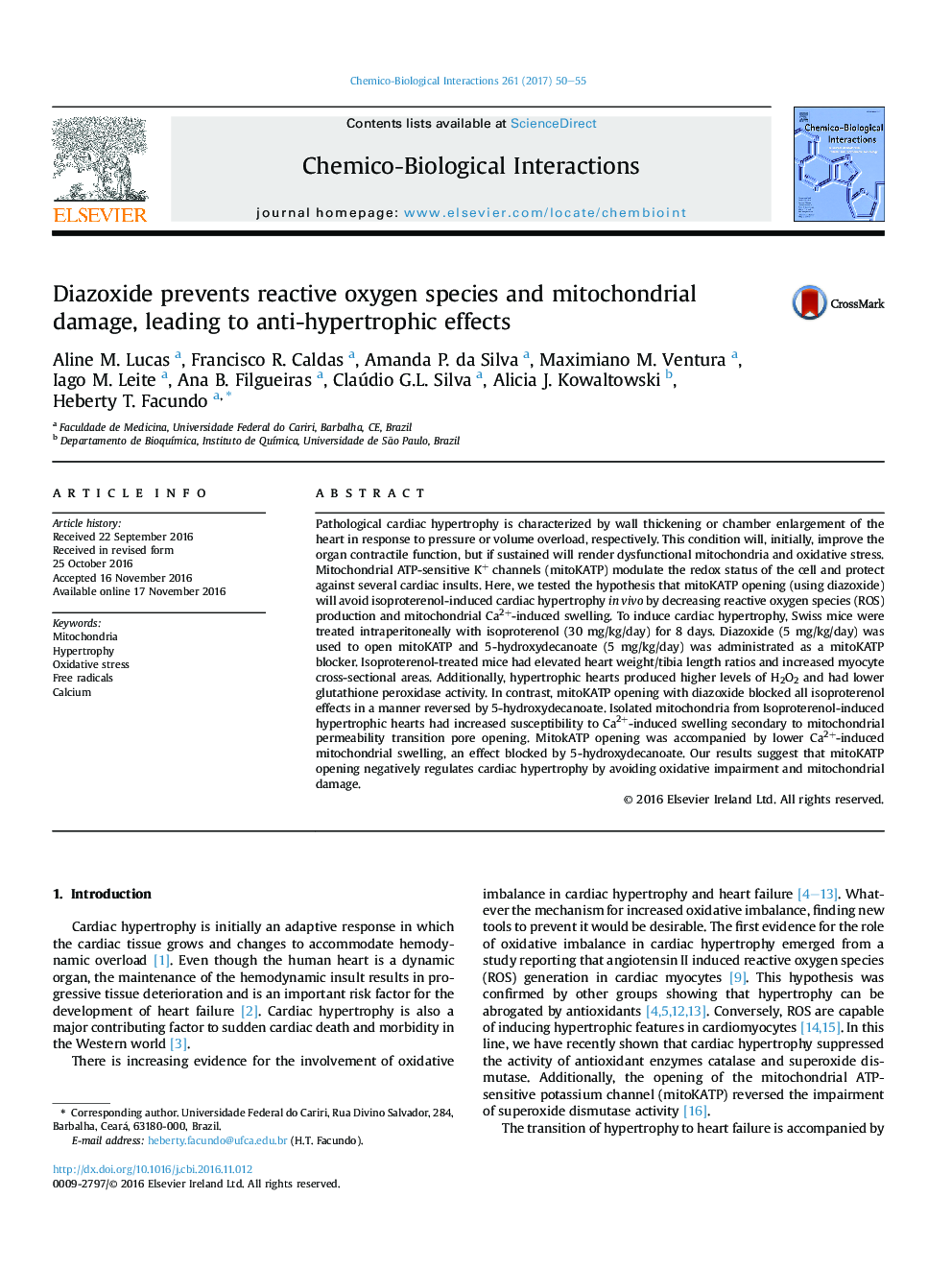| کد مقاله | کد نشریه | سال انتشار | مقاله انگلیسی | نسخه تمام متن |
|---|---|---|---|---|
| 5559424 | 1561581 | 2017 | 6 صفحه PDF | دانلود رایگان |
- DZX protects against pathological cardiac hypertrophy.
- DZX enhances glutathione peroxidase activity and decrease H2O2 production.
- DZX avoids the opening of the mitochondrial permeability transition pore during cardiac hypertrophy.
Pathological cardiac hypertrophy is characterized by wall thickening or chamber enlargement of the heart in response to pressure or volume overload, respectively. This condition will, initially, improve the organ contractile function, but if sustained will render dysfunctional mitochondria and oxidative stress. Mitochondrial ATP-sensitive K+ channels (mitoKATP) modulate the redox status of the cell and protect against several cardiac insults. Here, we tested the hypothesis that mitoKATP opening (using diazoxide) will avoid isoproterenol-induced cardiac hypertrophy in vivo by decreasing reactive oxygen species (ROS) production and mitochondrial Ca2+-induced swelling. To induce cardiac hypertrophy, Swiss mice were treated intraperitoneally with isoproterenol (30 mg/kg/day) for 8 days. Diazoxide (5 mg/kg/day) was used to open mitoKATP and 5-hydroxydecanoate (5 mg/kg/day) was administrated as a mitoKATP blocker. Isoproterenol-treated mice had elevated heart weight/tibia length ratios and increased myocyte cross-sectional areas. Additionally, hypertrophic hearts produced higher levels of H2O2 and had lower glutathione peroxidase activity. In contrast, mitoKATP opening with diazoxide blocked all isoproterenol effects in a manner reversed by 5-hydroxydecanoate. Isolated mitochondria from Isoproterenol-induced hypertrophic hearts had increased susceptibility to Ca2+-induced swelling secondary to mitochondrial permeability transition pore opening. MitokATP opening was accompanied by lower Ca2+-induced mitochondrial swelling, an effect blocked by 5-hydroxydecanoate. Our results suggest that mitoKATP opening negatively regulates cardiac hypertrophy by avoiding oxidative impairment and mitochondrial damage.
229
Journal: Chemico-Biological Interactions - Volume 261, 5 January 2017, Pages 50-55
